Frank Hopfgartner
Training Gradient Boosted Decision Trees on Tabular Data Containing Label Noise for Classification Tasks
Sep 13, 2024Abstract:Label noise refers to the phenomenon where instances in a data set are assigned to the wrong label. Label noise is harmful to classifier performance, increases model complexity and impairs feature selection. Addressing label noise is crucial, yet current research primarily focuses on image and text data using deep neural networks. This leaves a gap in the study of tabular data and gradient-boosted decision trees (GBDTs), the leading algorithm for tabular data. Different methods have already been developed which either try to filter label noise, model label noise while simultaneously training a classifier or use learning algorithms which remain effective even if label noise is present. This study aims to further investigate the effects of label noise on gradient-boosted decision trees and methods to mitigate those effects. Through comprehensive experiments and analysis, the implemented methods demonstrate state-of-the-art noise detection performance on the Adult dataset and achieve the highest classification precision and recall on the Adult and Breast Cancer datasets, respectively. In summary, this paper enhances the understanding of the impact of label noise on GBDTs and lays the groundwork for future research in noise detection and correction methods.
AI Chatbots as Multi-Role Pedagogical Agents: Transforming Engagement in CS Education
Aug 08, 2023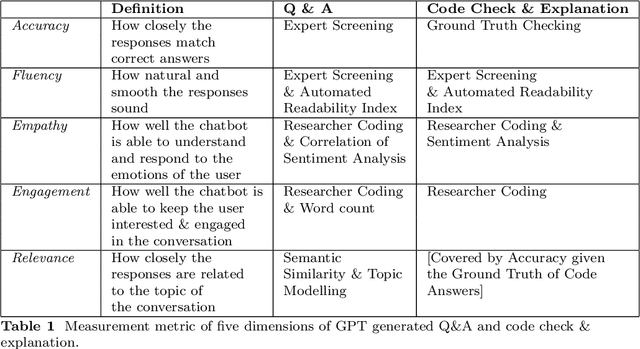

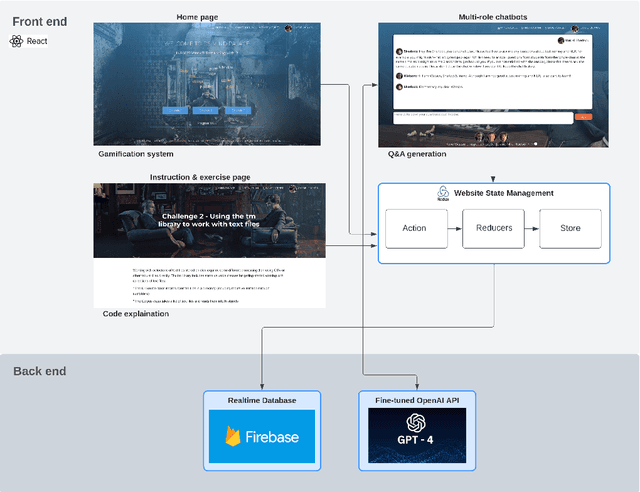

Abstract:This study investigates the use of Artificial Intelligence (AI)-powered, multi-role chatbots as a means to enhance learning experiences and foster engagement in computer science education. Leveraging a design-based research approach, we develop, implement, and evaluate a novel learning environment enriched with four distinct chatbot roles: Instructor Bot, Peer Bot, Career Advising Bot, and Emotional Supporter Bot. These roles, designed around the tenets of Self-Determination Theory, cater to the three innate psychological needs of learners - competence, autonomy, and relatedness. Additionally, the system embraces an inquiry-based learning paradigm, encouraging students to ask questions, seek solutions, and explore their curiosities. We test this system in a higher education context over a period of one month with 200 participating students, comparing outcomes with conditions involving a human tutor and a single chatbot. Our research utilizes a mixed-methods approach, encompassing quantitative measures such as chat log sequence analysis, and qualitative methods including surveys and focus group interviews. By integrating cutting-edge Natural Language Processing techniques such as topic modelling and sentiment analysis, we offer an in-depth understanding of the system's impact on learner engagement, motivation, and inquiry-based learning. This study, through its rigorous design and innovative approach, provides significant insights into the potential of AI-empowered, multi-role chatbots in reshaping the landscape of computer science education and fostering an engaging, supportive, and motivating learning environment.
An Analysis of Classification Approaches for Hit Song Prediction using Engineered Metadata Features with Lyrics and Audio Features
Jan 31, 2023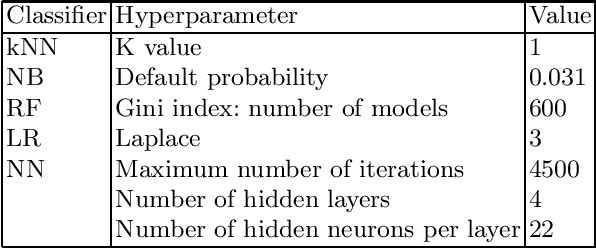

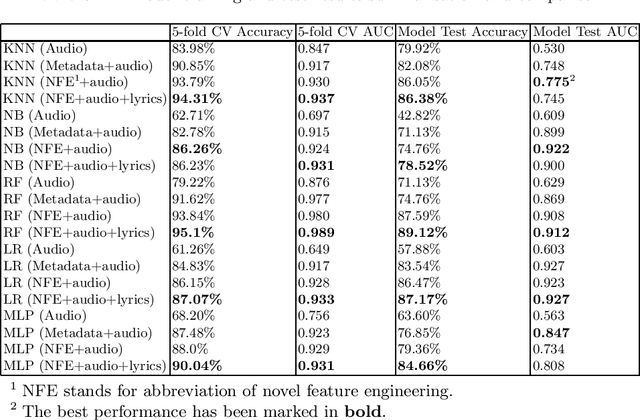
Abstract:Hit song prediction, one of the emerging fields in music information retrieval (MIR), remains a considerable challenge. Being able to understand what makes a given song a hit is clearly beneficial to the whole music industry. Previous approaches to hit song prediction have focused on using audio features of a record. This study aims to improve the prediction result of the top 10 hits among Billboard Hot 100 songs using more alternative metadata, including song audio features provided by Spotify, song lyrics, and novel metadata-based features (title topic, popularity continuity and genre class). Five machine learning approaches are applied, including: k-nearest neighbours, Naive Bayes, Random Forest, Logistic Regression and Multilayer Perceptron. Our results show that Random Forest (RF) and Logistic Regression (LR) with all features (including novel features, song audio features and lyrics features) outperforms other models, achieving 89.1% and 87.2% accuracy, and 0.91 and 0.93 AUC, respectively. Our findings also demonstrate the utility of our novel music metadata features, which contributed most to the models' discriminative performance.
SS-BERT: Mitigating Identity Terms Bias in Toxic Comment Classification by Utilising the Notion of "Subjectivity" and "Identity Terms"
Sep 06, 2021
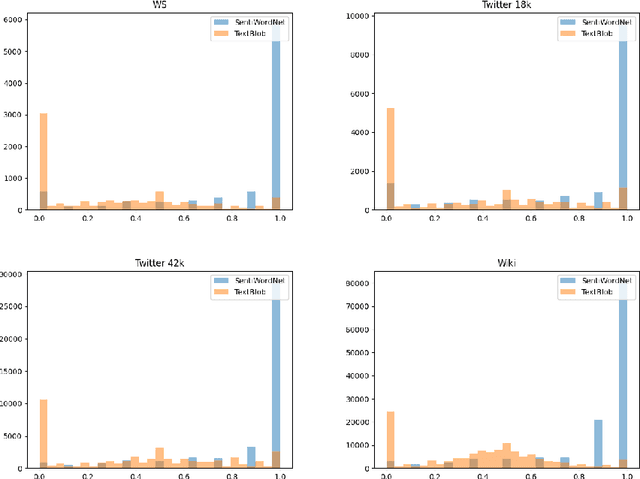
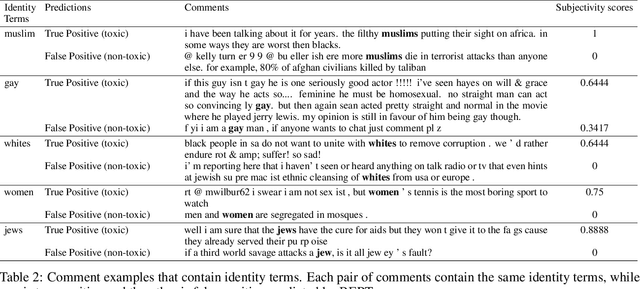
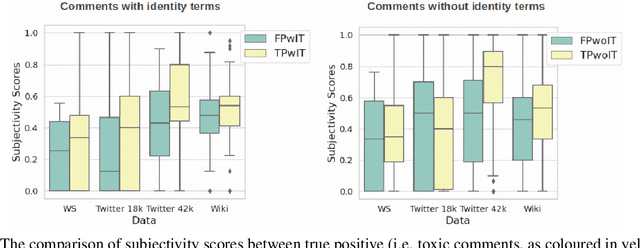
Abstract:Toxic comment classification models are often found biased toward identity terms which are terms characterizing a specific group of people such as "Muslim" and "black". Such bias is commonly reflected in false-positive predictions, i.e. non-toxic comments with identity terms. In this work, we propose a novel approach to tackle such bias in toxic comment classification, leveraging the notion of subjectivity level of a comment and the presence of identity terms. We hypothesize that when a comment is made about a group of people that is characterized by an identity term, the likelihood of that comment being toxic is associated with the subjectivity level of the comment, i.e. the extent to which the comment conveys personal feelings and opinions. Building upon the BERT model, we propose a new structure that is able to leverage these features, and thoroughly evaluate our model on 4 datasets of varying sizes and representing different social media platforms. The results show that our model can consistently outperform BERT and a SOTA model devised to address identity term bias in a different way, with a maximum improvement in F1 of 2.43% and 1.91% respectively.
 Add to Chrome
Add to Chrome Add to Firefox
Add to Firefox Add to Edge
Add to Edge